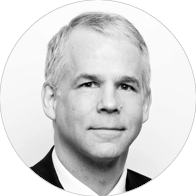
Today is the formal release date for David Aston’s new book, The Sleep-Easy Retirement Guide. Below is a Q&A I conducted with David to mark the occasion. See also my review of the book at MoneySense that appeared in December, as well as the Hub’s throw to that piece.
Jon Chevreau: What inspired you to write the book after so many years of writing about Retirement?
David Aston: I have covered most of the key issues in planning for retirement in stand-alone articles I have written over the years. But I wanted to update that advice for current circumstances and figures, show how all the issues fit together as an interconnected whole, and provide it in a combined reference guide that people could have on their shelf and readily turn to when questions came up.
Q2: What do you think about the FIRE movement?
DA: The Financial Independence Retire Early (FIRE) movement is certainly laudable. It’s an admirable concept that people should try to achieve Financial Independence as early as possible, which frees them up to do work that is most meaningful to them (rather than being obligated to do work that maximizes income). As I understand it, it also includes the concept that people should adopt a modest lifestyle that consumes money carefully and wisely without wasting it, which in turn helps make Financial Independence more achievable at a relatively young age. But from what I’ve read, many of the FIRE scenarios are oriented to extreme examples of people trying to achieve Financial Independence in their 30s. So it sometimes comes up as a concept for millennials who are looking for Financial Independence as a near-time goal rather than one that is achieved after a long career at work. That’s only possible for a tiny minority of people. In my experience, it is far more common for people in their 30s to go through a very difficult financial crunch period where they are struggling to buy a house, then make humungous mortgage payments, and cover the expensive costs of raising kids. FIRE goals are not realistic and achievable in your 30s for the vast majority of people. However, the quality of thriftiness and emphasis on saving can be emulated by everyone. I personally think FIRE makes a fair amount of sense for the far more common case of people of average means who might aspire to achieving Financial Independence in their early 60s or possibly their late 50s, but that may not sound particularly appealing to millennials.
Q3: What’s your take on Semi-Retirement and/or Phased Retirement?
DA: The whole world of work for older workers is opening up. The once accepted norm that people retired from their career job to live a life of leisure close to age 65 has pretty much gone out the window. There are lots of expanding options for people to do post-career work that is different than their career job. Often it involves reduced hours, but it can also be full-time work that is less stressful or more fulfilling, or some combination of these attributes. There are various forms of part-time work, contract work, self-employment, consulting or temp work. Often it means switching employers or being self-employed, but it can also mean gearing down to reduced hours or a less stressful role with the same employer. And these post-career options are often started in your early 60s, but they can also happen earlier or later. So there is a vast array of options out there and it’s really up to people to pursue the opportunities that appeal to them the most.
I should mention that “phased retirement” is a term that is sometimes applied to formal corporate programs that allow older employees to adopt a reduced-work schedule or otherwise gear down with the same company prior to full-retirement from their career job. If you go back about 10 years or so, there was an expectation that these kind of corporate programs would increasingly catch on and be offered by major corporations. However, it never really caught on as formal corporate programs that are broadly offered to all older employees. What I have seen happen is that you get a lot of these kind of arrangements to offer reduced hours or less stressful/more fulfilling job functions negotiated on an informal, individual basis. They aren’t offered to everybody in the company. Whether or not an employee can achieve something like that or not depends on the nature of their job, what their boss is looking for, as well as their individual wants and needs.

Q4: I guess that’s a good segue to asking about your own personal plans for Retirement and that of your spouse. Is the book a template for your own plans. I believe you are in your early 60s now: do you plan to work into your 70s or do you see a time when you’ll just chuck it all and kick back and travel and indulge in a few crazy hobbies?
DA: I’m 63 now, and my work as a freelance personal finance journalist is a second career after a first career in the corporate world. My wife is a bit younger and still working in her career job. We both enjoy what we’re doing. We don’t have a set time period in mind for how long we will continue to do those jobs. I expect we’ll continue for as long as we are capable of doing it well and also continue to find it engaging, satisfying and fulfilling.
Q5: Tell us about the title: how it evolved and why you and your
editors chose it?
DA: I wanted to evoke the concept of achieving a level of comfort with the most difficult and challenging questions related to preparing for retirement. The advice one commonly sees on the internet about it tends to be fragmented, may apply to one situation but not others, and is often conflicting. So I wanted to provide a helpful and consistent guidebook for people who are trying to navigate their way through these complex questions. Metaphorically, it’s intended to give people a comfort with addressing the questions that keeps them up at night because they keep turning the questions over in their minds looking for answers. The book is about helping them find the answers that are right for their situation and preferences.
Q6: How about the intended audience of the book? Seems to me to be primarily for consumers and those near the end of their working careers: what I call “Boomers on the cusp of Retirement.” Or is it just as much for Gen X and Millennials: i.e. our children?
DA: I expect that the people who will find the book to be of most interest are those who are preparing financially for retirement in earnest. In my experience, that typically starts for people some time around their late 40s or early 50s and continues through to when they retire. If they retire in good financial shape, the book won’t necessarily then be of prime interest. If their financial situation is unclear or a bit dicey when they retire, or if they encounter a major financial hiccup in retirement, then I think those people might also turn to the book for help.
I wouldn’t realistically expect people in their 20s, 30s, and early 40s to be as interested in the book as those who are older. But I think the material on saving for retirement in chapter 3 might prove helpful to many people in that age group. So I believe the book can be of some value to younger readers who are pondering about what their financial priorities should be at that age.
Q7: I know the book addresses both couples and singles but I’m wondering whether you think the single retiree market is a bit underserved, whether in books, the media or even the financial industry? What’s your rule of thumb: I know it’s not just penciling in half as much for a single than a couple.
DA: A lot of people don’t fully appreciate that it’s a lot more expensive to retire as a single than as a typical couple (who these days have usually both worked over reasonably long careers). Couples typically are able to share costs for things like accommodation and a car, which singles generally don’t do. As a rule-of-thumb, singles can spend roughly 60% to 80% of what a couple spends on a combined basis to live a fairly similar lifestyle, although that varies widely in practice. (Consider that a couple which shares a car has much lower transportation costs per person than a single person with a car. However, a couple with two cars has transportation costs per person that aren’t much different than a single person.)
Another factor that makes retirement easier for couples (where both spouses have had long careers) is the way government pensions work. A single person gets one set of government pensions (CPP and OAS), whereas a couple (with both spouses having had long careers) essentially get two sets of government pensions.
So couples (where both have worked long careers) have essentially double the government pension income compared to singles, but their expenses aren’t double compared to singles.
Q8: How has the reception of the book been, keeping in mind that it was only released today? Any surprises? Any feedback from financial planners and other financial professionals?
DA: I’ve received very encouraging feedback from a few people who have previewed the book ahead of its release date. However, we’ll have to wait and see for the general reaction from people preparing for retirement and from financial professionals.
JC: Well, I’m sure it will do very well and good luck!
DA: Thank you, Jon.



